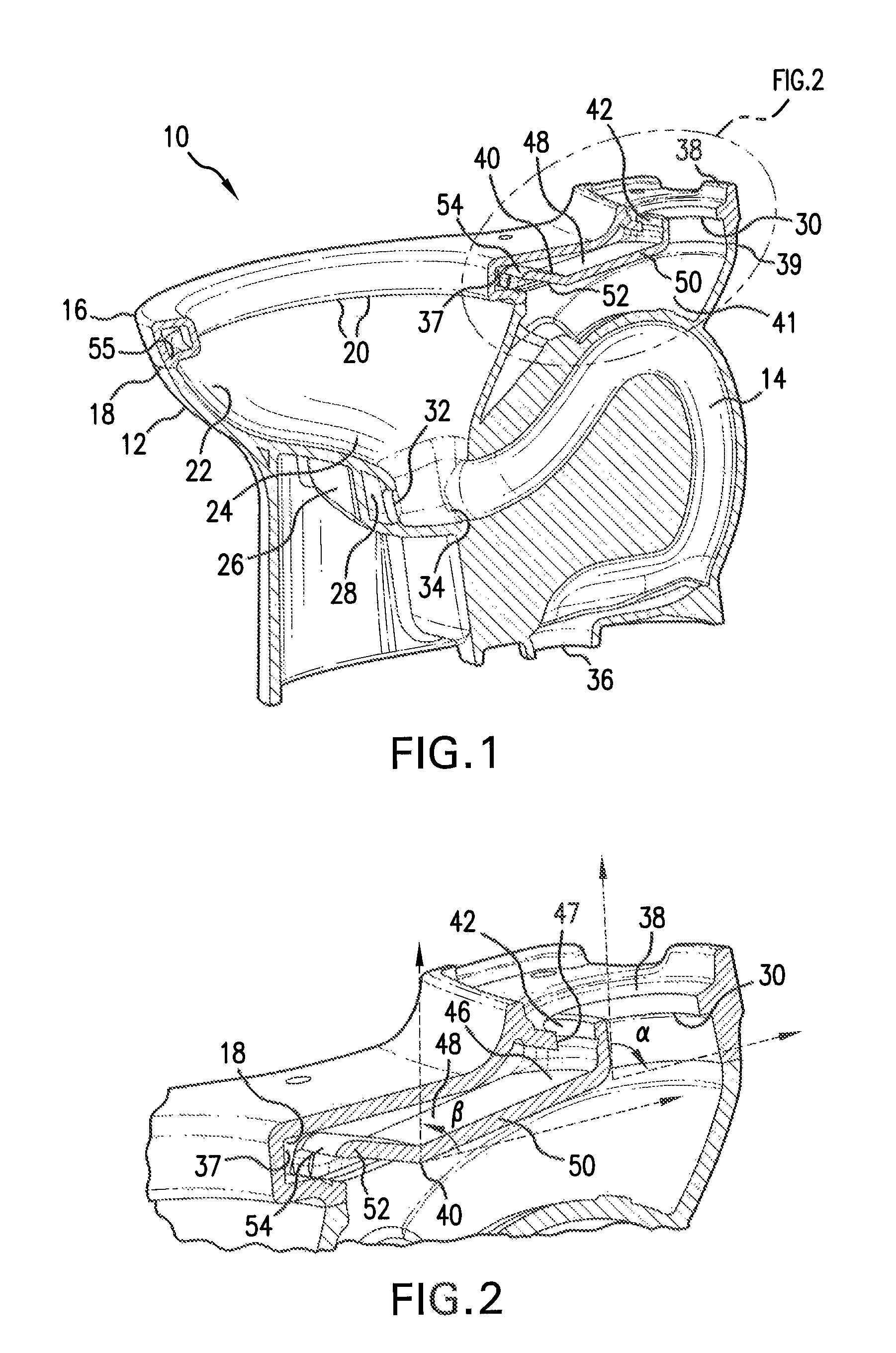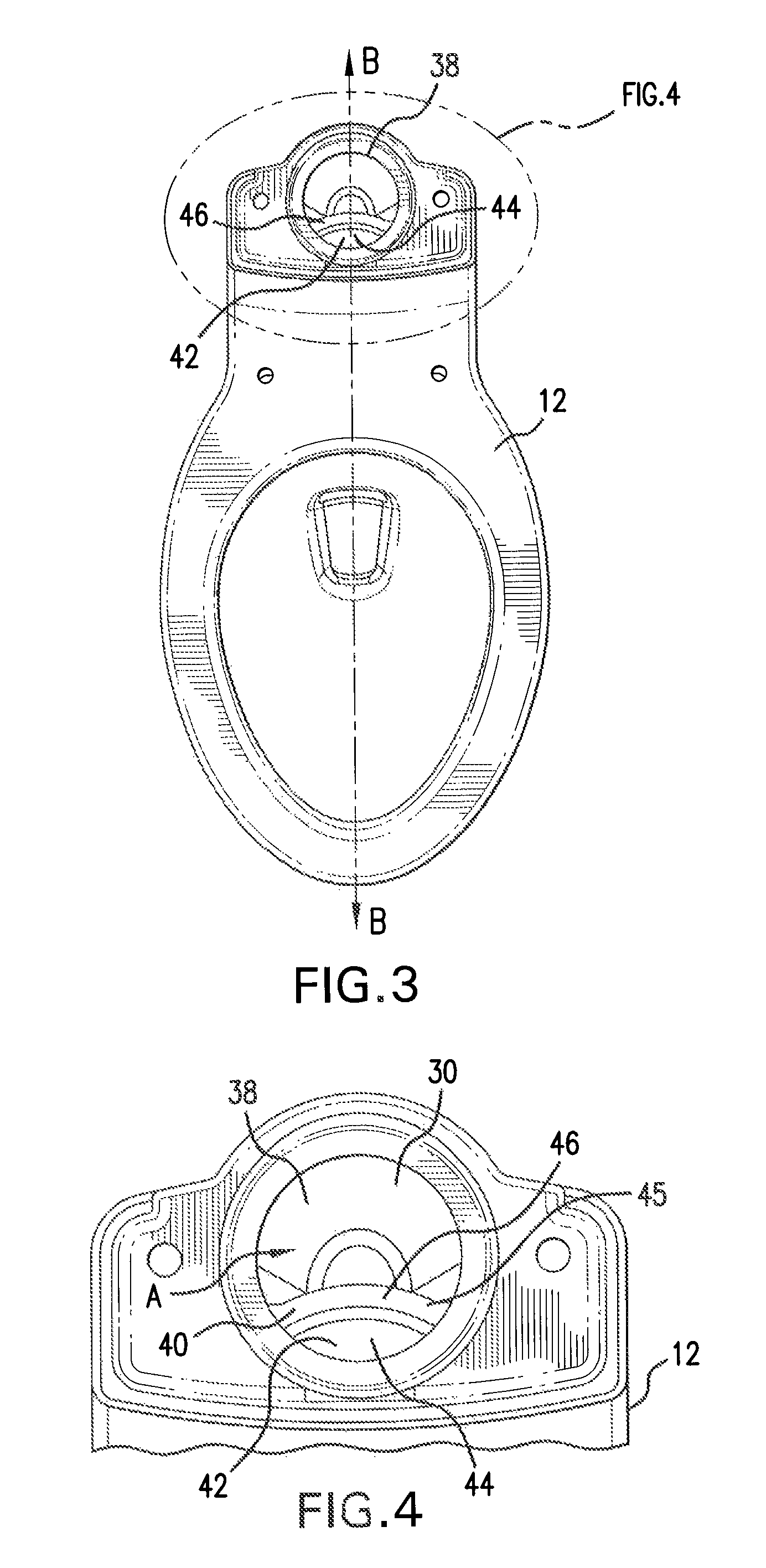High performance toilet with rim-jet control capable of enhanced operation at reduced flush volumes
a high-performance, flushing-volume technology, applied in water closets, water installations, constructions, etc., can solve the problems of poor bulk removal performance, high water level, and manual cleaning of the toilet bowl, so as to reduce the water volume without diminishing the ability to remove waste, advanced cleaning function, and clean the toilet bowl
- Summary
- Abstract
- Description
- Claims
- Application Information
AI Technical Summary
Benefits of technology
Problems solved by technology
Method used
Image
Examples
example 2
[0126]Using the same toilet prepared for Comparative Example 1, an attempt was made to increase the flow of water to the rim of the toilet, by adding a variation of the control element to the design and its impact was evaluated through CFD simulations of a 4.8 liter flush. The control element selected for this example is pictured in FIG. 10. The rim channel end portion of the control element included the optional raised portion and the optional downstream communication opening between the jet channel and rim channel. The rear portion of the control element was configured so as not to extend into the area directly beneath the bowl inlet, beginning instead roughly 40 mm downstream of the front edge of the bowl inlet. All other geometrical features were identical to those of Comparative Example 1, including use of the trapway diameter of 60.3 mm and jet outlet port diameter of 40 mm. As displayed in Table 1, the inclusion of the control element has only a small effect on the strength o...
example 3
[0127]A further attempt to increase the improvements shown in Example 2 by increasing the flow of water to the rim of the toilet was attempted in a second variation of the control element which was added to the same toilet design of Comparative Example 1 and Example 2 and its impact evaluated through CFD simulations of a 4.8 liter flush. The control element selected for this Example is pictured in FIG. 11. The forward portion of the control element included the optional raised portion and optional downstream opening which were made to be identical in geometry to the control element of Example 2. However, the rear portion of the control element was configured to extend about 30 mm (as measured transversely extending down the mid-line of the toilet bowl extending from the front to the back of the toilet bowl) into the area beneath the bowl inlet. Both of the control elements of Examples 2 and this Example had a generally transversely extending configuration as shown in FIGS. 10 and 11...
example 4
[0129]In another attempt to further increase the flow of water to the rim of the toilet, yet a third variation of the control element was added to the toilet configuration of the previous Examples and its design and impact on flow evaluated through CFD simulations of a 4.8 liter flush. The control element selected for this example is shown in FIG. 6. The rim channel end portion of the control element was configured to include the optional raised portion and the optional opening from the jet channel to the rim channel in the same manner and having the same geometry as was used in Examples 2 and 3. However, in this Example, a rear portion having an upwardly extending wall was provided to the control element and configured so as to extend upwardly into the area demarcated by the bowl inlet in the location of the rear portion of Example 3, but also extending upwardly. All other geometrical features of the toilet bowl were identical to those of the preceding Examples, including the trapw...
PUM
 Login to View More
Login to View More Abstract
Description
Claims
Application Information
 Login to View More
Login to View More - R&D
- Intellectual Property
- Life Sciences
- Materials
- Tech Scout
- Unparalleled Data Quality
- Higher Quality Content
- 60% Fewer Hallucinations
Browse by: Latest US Patents, China's latest patents, Technical Efficacy Thesaurus, Application Domain, Technology Topic, Popular Technical Reports.
© 2025 PatSnap. All rights reserved.Legal|Privacy policy|Modern Slavery Act Transparency Statement|Sitemap|About US| Contact US: help@patsnap.com



